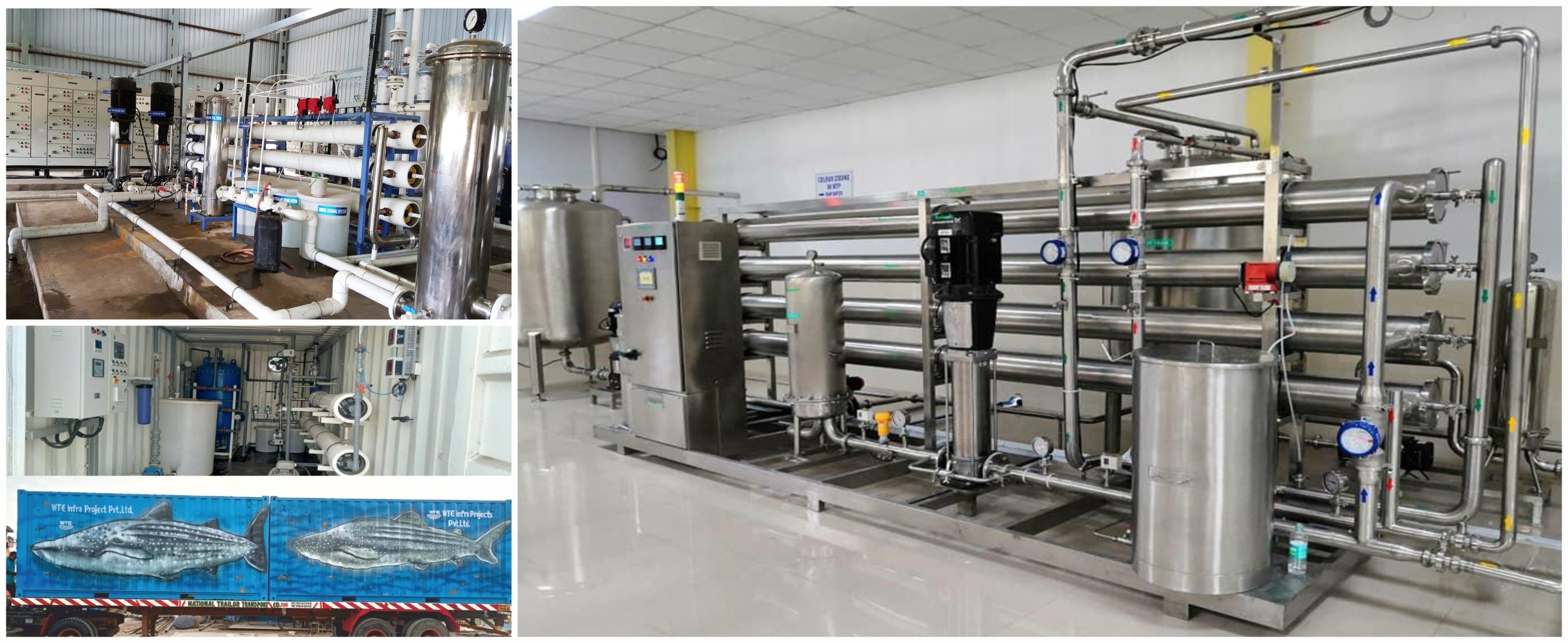Frequently Asked Question
A reverse osmosis (RO) plant is a water treatment system that uses a membrane to remove dissolved ions and molecules from water. The process of reverse osmosis is based on the principle of osmosis, but in reverse. This means that water is forced through a semi-permeable membrane under high pressure, which removes dissolved ions and molecules and leaves behind pure water.
A reverse osmosis plant typically consists of several stages of filtration, including sediment filtration, pre-treatment filtration, and reverse osmosis filtration. Water is first passed through sediment filters to remove larger particles such as dirt, sand, and debris. Then it goes through pre-treatment filter, where chlorine and other chemical substances are removed to prevent damage to the membrane. After pre-treatment, the water is forced through a semi-permeable membrane under high pressure. The membrane only allows pure water molecules to pass through, while rejecting dissolved ions and molecules. The purified water is then collected for use, while the rejected water is discharged as waste.
Reverse osmosis water has several advantages, including:
• High purity: Reverse osmosis removes dissolved ions and molecules, leaving behind highly purified water.
• Multiple uses: RO water can be used in a variety of applications, including drinking water, industrial processes, and power generation.
• Cost-effective: RO process is relatively cheaper than other processes like ion exchange, distillation, etc.
• Low maintenance: RO systems require minimal maintenance, just regular cleaning of filters.
The main disadvantage of a reverse osmosis plant is the cost of operation. It requires high-pressure pumps, which can be costly to run. Additionally, the process generates a large amount of waste water, which can also be expensive to treat. RO also consumes more energy than other process and membrane replacement need to be done regularly.
Reverse osmosis water is commonly used in a variety of industrial and commercial applications, including:
• Drinking water
• Industrial processes
• Power generation
• Pharmaceuticals
• Cosmetics and personal care products
• Electronics and semiconductors
• Boiler feed water
• Laboratory use
• Chemicals
• Food and beverage
The membrane needs to be replaced at regular intervals, depending on the water quality and the level of use. The membrane typically needs to be replaced every few years, but the exact frequency will depend on the specific application and the level of water impurities. Additionally, regular cleaning is also necessary to ensure the longevity of the membrane.
Reverse osmosis plant can process water with high TDS level, but it will require more pressure to push water through the membrane. High TDS water also has higher chances of fouling the membrane, so more frequent cleaning and membrane replacement is necessary. However, some highly saline water may not be treatable through the reverse osmosis process, in such cases, alternatives like Multi-stage flash distillation should be used.

.jpg)
.jpg)
 (1).jpeg)
.jpeg)
.jpg)